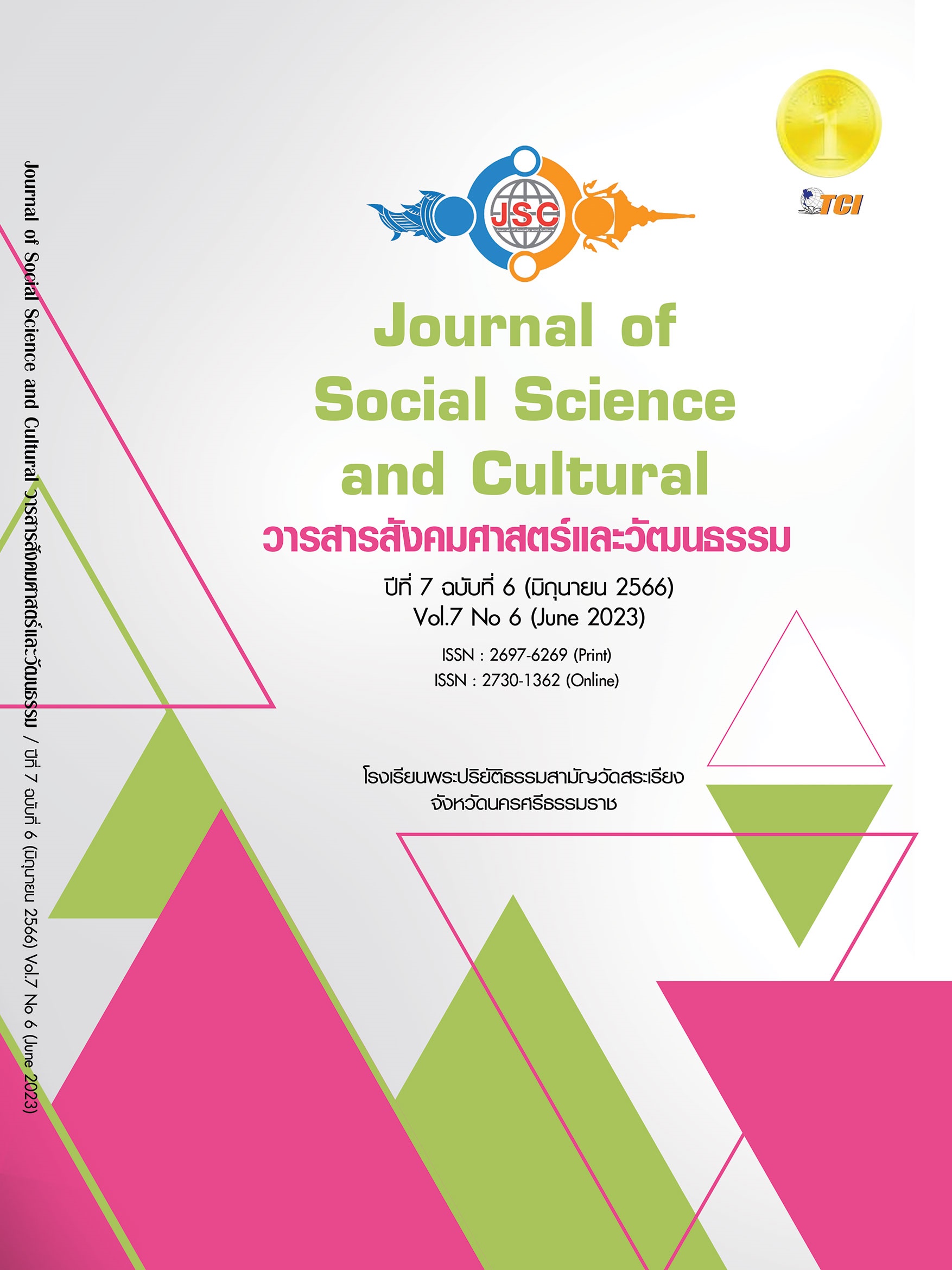WAR METAPHOR: CONCEIVING OF COVID-19 AMONG THAIS AND CHINESE
Main Article Content
Abstract
This quantitative and qualitative study employed conceptual metaphor theory to analyze and compare the war metaphors used to present COVID-19 in Thai and Chinese. Data sources included government media, mass media, and social media. Results showed that both Thais and Chinese people systematically conceive of COVID-19 as war concept. Conceptual metaphor CONTROL OF COVID-19 IS WAR in Thai and Chinese had mapped some similarities in war concept to control of COVID-19 concept such as combatants, combat tactics, battlegrounds, weapons, and combat results. More varieties of metaphors were found in Chinese data, perhaps due to the severity of the COVID-19 pandemic and the COVID-19 control policies in China. Most of the metaphors were found in both Thai and Chinese social media, the Thai sources used more metaphorical expressions in mass media than in government media. In contrast, Chinese sources showed more metaphorical expressions in government media than in mass media, perhaps due to the discourse structure of sources from government media. Both Thais and Chinese people were fond of using war metaphors because Thailand and China have cultures, societies, and histories involving war. Thus, war metaphors were used to increase the efficiency of disseminating information about COVID-19 and persuade audiences to comply with the measures.
Article Details
References
เอกพล ดวงศรี. (2566). สงคราม (โรค) โควิด 19: อุปลักษณ์เชิงมโนทัศน์ของสังคมไทยและโลกที่สะท้อนผ่าน หนังสือพิมพ์ไทยออนไลน์. วารสารมนุษยศาสตร์สาร, 24(1), 226-251.
ชัชวดี ศรลัมพ์. (2548). อุปลักษณ์ตามแนวคิดของภาษาศาสตร์ปริชาน. วารสารศิลปศาสตร์, 5(1), 1-16.
ซิน เซี่ย และดีอนา คาซา. (2565). การศึกษาเปรียบเทียบถ้อยคำในการประชาสัมพันธ์เพื่อเชิญชวนป้องกันโควิด- 19 ระหว่างสาธารณรัฐประชาชนจีนกับประเทศไทย. วารสารวิชาการ มหาวิทยาลัยหอการค้าไทย มนุษยศาสตร์และสังคมศาสตร์, 42(2), 36-50.
ธนพล เอกพจน์ และคณะ. (2563). [ไวรัสโคโรนาสายพันธุ์ใหม่ 2019 คือ ศัตรู] : การศึกษาอุปลักษณ์เชิงมโนทัศน์ของคนไทย ตามแนวภาษาศาสตร์ปริชาน. วารสารภาษา ศาสนา และวัฒนธรรม, 9(1), 1-37.
นววรรณ พันธุเมธา. (2555). คลังคำ ฉบับปรับปรุง. กรุงเทพมหานคร: อมรินทร์.
นันทนา วงษ์ไทย. (2563). ภาษาและความหมาย. (พิมพ์ครั้งที่ 3). กรุงเทพมหานคร: เค.ซี.อินเตอร์เพรส.
ยุทธการ ปัทมโรจน์. (2563). อุปลักษณ์เกี่ยวกับสถานการณ์การแพร่ระบาดโรคติดเชื้อไวรัสโคโรนา 2019 ในข่าวการเมืองไทยบนเว็บไซต์ไทยรัฐออนไลน์. วรรณวิทัศน์, 22(1), 134-175.
ราชบัณฑิตยสถาน. (2554). พจนานุกรม ฉบับราชบัณฑิตยสถาน พ.ศ.2554. เรียกใช้เมื่อ 28 เมษายน 2023 จาก https://dictionary.orst.go.th
สิทธิธรรม อ่องวุฒิวัฒน์. (2561). กลวิธีทางภาษาที่ใช้ในการบอกข่าวร้ายในภาษาไทยและเหตุจูงใจ. วารสารเกษมบัณฑิต, 19(1), 19-30.
Dictionary Editing Office of CASS. (2016). XIANDAI HANYU CIDIAN. Beijing: The Commercial Press.
Jia, G. (2021). A Study on the War Metaphors of News Headlines -- Taking the news title of COVID-19's epidemic as an example. JOURNAL OF WUYI UNIVERSITY, 40(11), 30-34.
Lakoff, G., & Johnson, M. (2003). Metaphor we live by. London: The University of Chicago press.
Liu, J., & Zhong, L. (2022). 新冠肺炎疫情的战争隐喻及其影响 (The war metaphor of the Corona Virus Disease 2019 epidemic and its impact). Journal of Chongqing University of Education, 35(1), 48-53.
Si, J. (2021). War Metaphors in the Shenzhen Special Zone Daily during the Outbreak of Coronavirus. Journal of Qingyuan Polytechnic, 14(2), 1-6.
Wang, Y. (2006). Cognitive Linguistics. Shanghai: Shanghai Foreign Language Education Press.
Yang, H. (2021). 政府重大态度的隐喻表达机制研究———以《抗击新冠肺炎疫情的中国行动》白皮书为例 (Research on the Metaphoric Expression Mechanism of the Government's Major Attitude——Taking the White Paper "China's Actions to Fight the Corona Virus Disease 2019 Epidemic" as an Example). The Journal Of Humanities, 22(8),
-96.
Zeng, Y., & Liu, J. (2021). Novel Coronavirus Pneumonia in People's Daily : a Report on War Metaphor. JOURNAL OF JIAYING UNIVERSITY( Philosophy & Social Sciences), 39(5), 56-60.
Zhang, Q. (2021). A study of Conceptual Metaphors on "Epidemic Prevention and Control Is A War". Media Observer, 38(6), 63-70.
Zhao, Y. (2000). Introduction to Cognitive Linguistics. Shanghai: Shanghai Foreign Language Education Press.
Zhou, C. (2021). 隐喻视角下的突发公共卫生事件新闻研究——基于新冠肺炎疫情报道语料库 (News research on public health emergencies from the perspective of metaphor——Based on the corpus of the Corona Virus Disease 2019 epidemic reports). PUBLIC COMMUNICATION OF SCIENCE TECHNOLOGY, 15(4), 86-89


